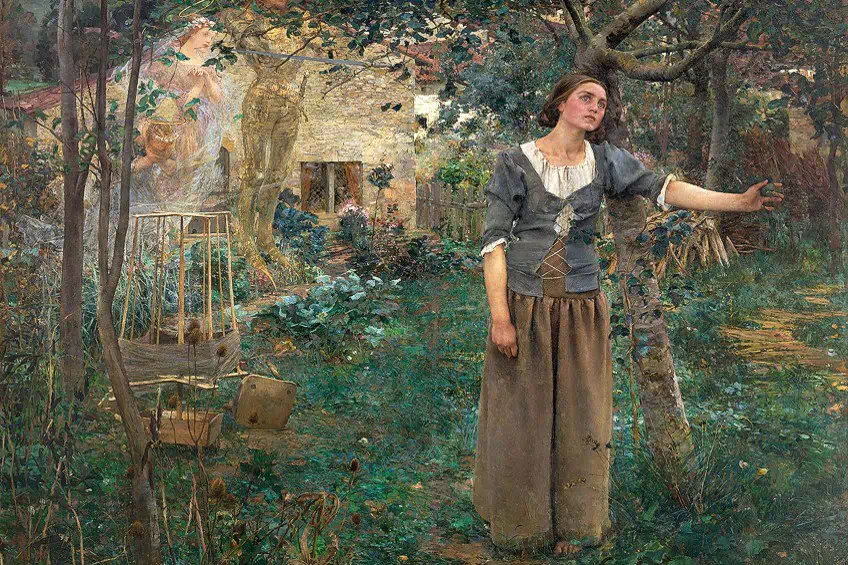“Joan of Arc” Painting by Jules Bastien-Lepage – Depicting History
The St. Joan of Arc painting depicts a woman wearing peasant clothing standing in a garden with an expression of deep contemplation on her face. Behind her, one can observe the spinning loom that she was working at before something distracted her. But, what is it that drew her from her work and into such deep thought? Let’s find out below, as we explore the Joan of Arc painting by Jules Bastien-Lepage!
Understanding the Joan of Arc Painting by Jules Bastien-Lepage
| Artist Name | Jules Bastien-Lepage (1848 – 1884) |
| Date Completed | 1879 |
| Medium | Oil on canvas |
| Dimensions (cm) | 254 x 279 |
| Current Location | The Metropolitan Museum of Art, New York City, United States |
After France’s defeat in the Franco-Prussian War, Joan of Arc grew to become a significant figure in the country’s culture throughout the 1870s and 1880s. During the fight, Prussia annexed the eastern half of Lorraine, where both Joan of Arc and the artist who produced this painting were born. However, Joan of Arc would have certain visions which would change the course of French history. Before we learn more about the St. Joan of Arc painting, let’s introduce you to Jules Bastien-Lepage, the artist.
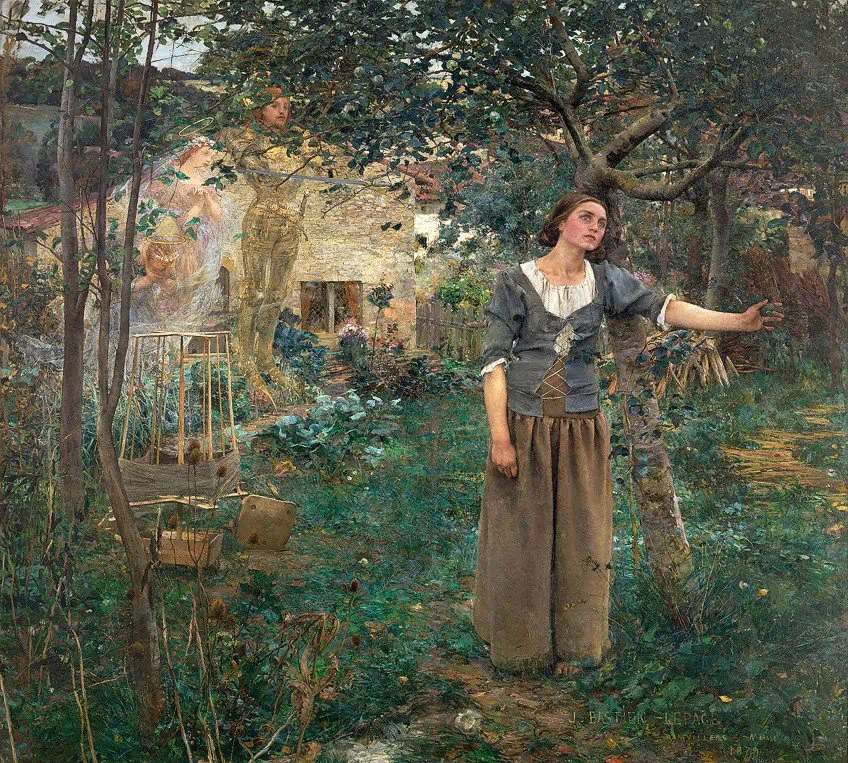
Introducing Jules Bastien-Lepage
| Artist Name | Jules Bastien-Lepage |
| Nationality | French |
| Date of Birth | 1 November 1848 |
| Date of Death | 10 December 1884 |
| Place of Birth | Damvillers, Meuse, France |
Jules Bastien-Lepage was initially taught art by his father before he began his formal training at Verdun. In 1867, he then moved to Paris, where he enrolled at the École des Beaux-arts. In 1870, he was wounded in the Franco-Prussian war, after which he went back home and began to paint the villagers.
Three years later, he produced a painting of his grandfather in the garden, which proved to be his breakthrough work after it was exhibited at the Paris Salon.
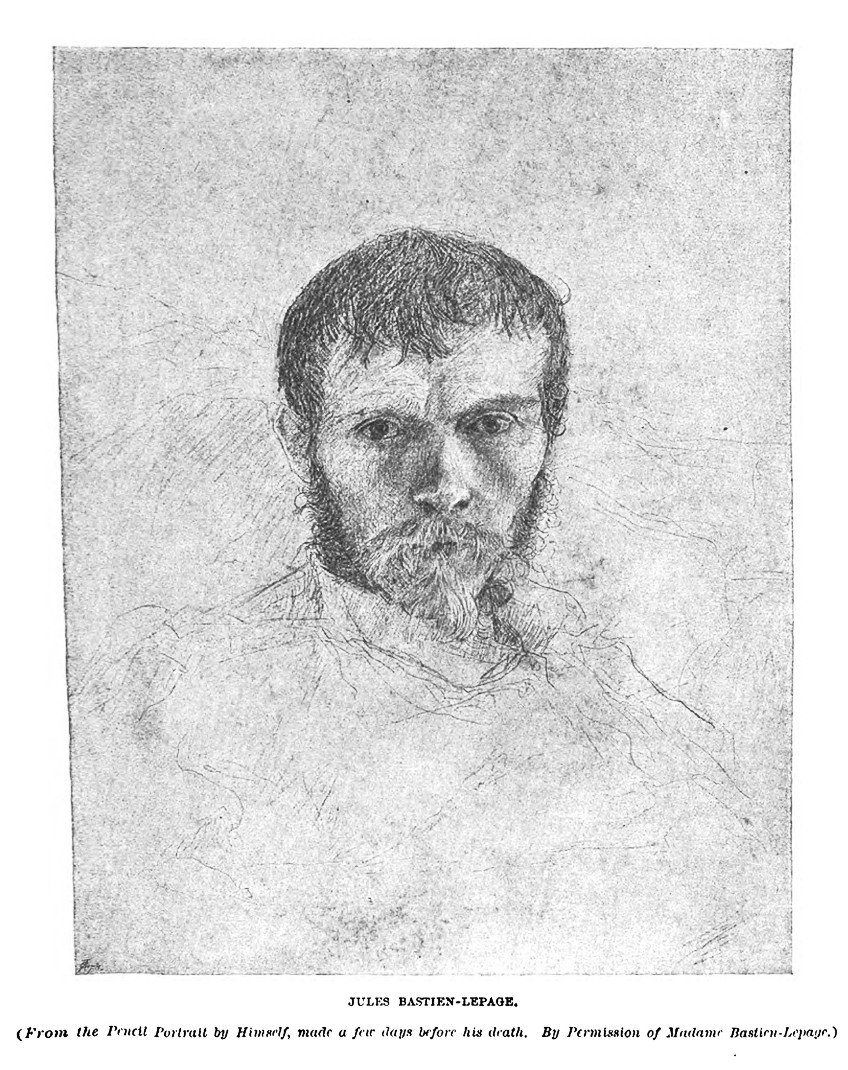
He was an influential figure in popularizing plein-air painting not just in France, but also in the United Kingdom, other European nations, the United States, and Australia. Despite his brief career, Bastien-Lepage had a significant effect on the French art scene. His impact may still be seen in the artwork of modern painters who work in the Naturalism style, such as Steve Kestrel, John Felsing, and Ron Kingswood.
Analysis of the Joan of Arc Painting by Jules Bastien-Lepage
Despite being set in Jules Bastien-Lepage’s garden, this work of art, one of his most renowned, was an uncommon foray into nationalistic History Painting. Joan of Arc is represented standing in the foreground, the abandoned loom in the background implies that she has unexpectedly been interrupted from her work. With her left arm spread out in front of her, she stares upward, as if in a trance. The natural environment in which she appears is portrayed with such accuracy that the work of art has a nearly photographic look to it.
This lifelike scene, however, features three ethereal-like beings standing behind her, who are depicted with considerably less detail.
The artist took a contemporary approach to this subject, depicting his country’s most iconic heroine not as a hero of war leading the people of France in the Hundred Years War, but instead at the age of 13, when she allegedly heard God’s voice, and the three saints Margaret, Catherine, and Michael appeared to her and urged her to take on the English. Political events were one of the reasons this artwork was so famous when it first appeared.
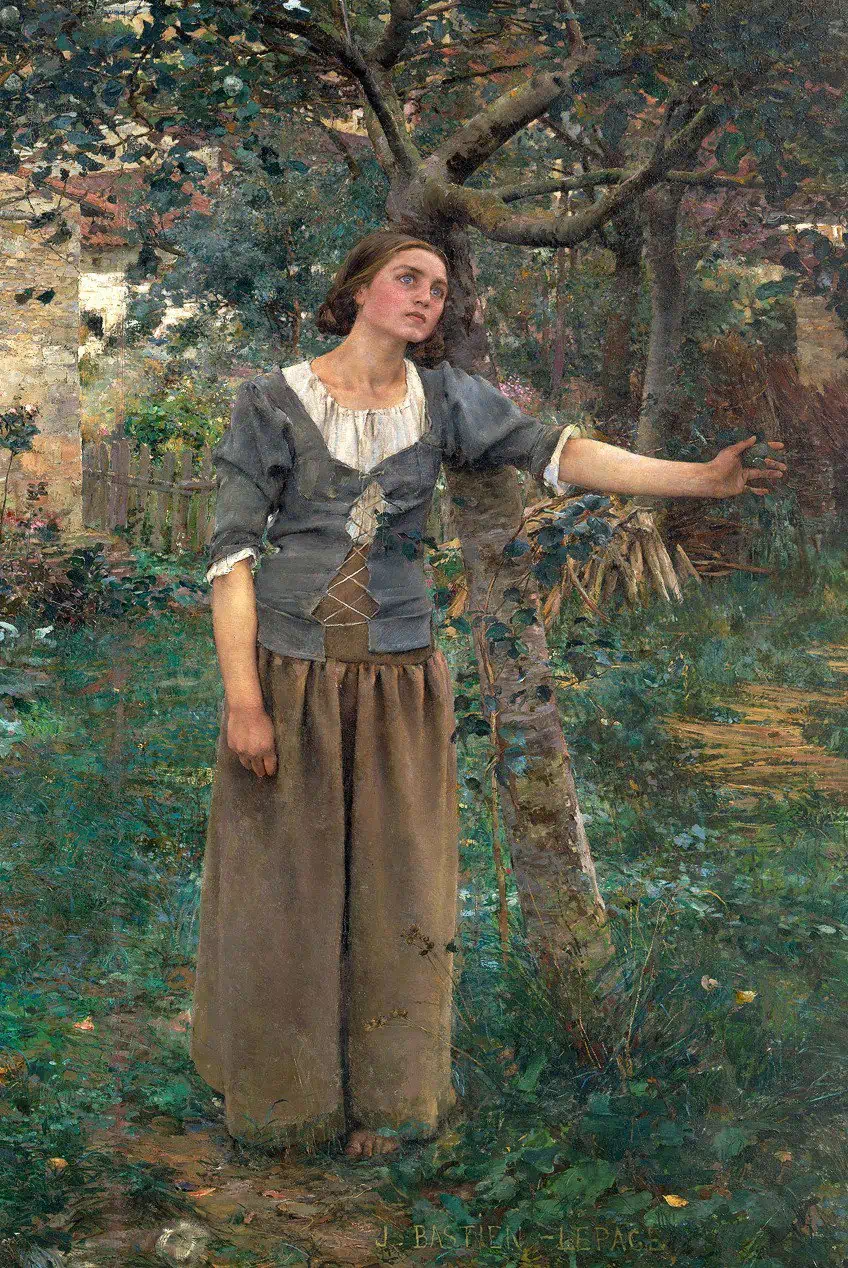
In 1879, Joan of Arc experienced a resurgence of interest in France, which had just been beaten in the Franco-Prussian war and experienced having part of its land taken by Germany – particularly the region of Lorraine, from where Joan of Arc originally came. She was regarded as a military hero for her bravery, and she was eventually canonized as a Catholic saint.
At the time, the celebration of national heroes was very significant, and Bastien-Lepage’s artwork could be understood as a fulfillment of that demand.
At the Salon of 1880, critics lauded the artist’s use of facial expression and pose to represent Joan’s spiritual visions, but considered the addition of the saints to be incoherent with his traditionally naturalistic style. The artist reportedly fled Paris for London after hearing the critics’ response. The artwork has also been compared to the English Pre-Raphaelite for being evocative of Victorian sentimentality and its abundance of botanical detail.
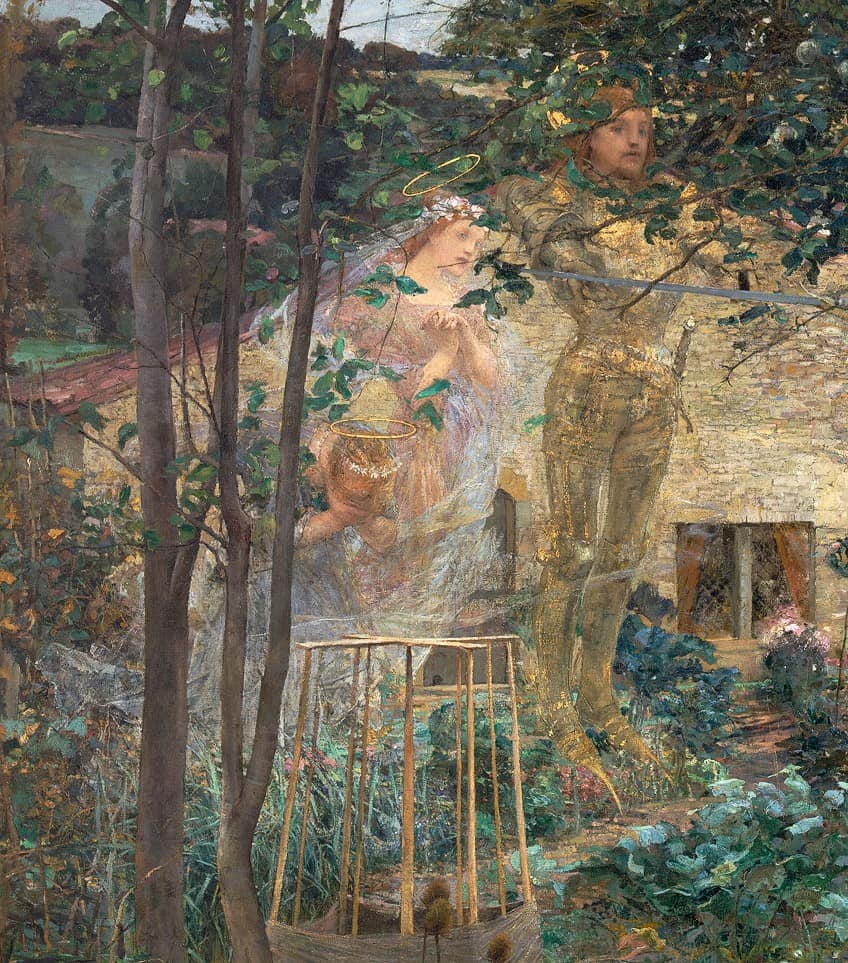
One of Bastien-Lepage’s contemporaries, Marie Bashkirtseff, commented in her diary about her displeasure with the response the St. Joan of Arc painting got from French critics, blaming them of not sufficiently admiring it; she remarked that the work of art was appropriately “worshiped” in the United States.
This famous artwork depicts Joan of Arc, the iconic French woman, who had visions at the age of 13 that she would one day lead the people of France out of the Hundred Year War. It portrays the moment that she is visited by three saints, and the expression on her face reveals her awakening. She would prove to be an inspiring figure in France during the Franco-Prussian War, in which the artist himself was wounded. Today, the artwork can be seen exhibited at the Metropolitan Museum of Art in New York City, the United States.
Frequently Asked Questions
What Is the St. Joan of Arc Painting About?
In this work of art, we can see a young Joan of Arc standing in a garden, as if in a deep trance. She has just been visited by three saints who have imparted visions upon her. As she was a figure who helped bring victory to France, the artist decided to portray her in order to express his patriotism.
Who Painted the St. Joan of Arc Painting?
This famous painting of Joan of Arc was painted by Jules Bastien-Lepage. Born in France, he was part of the Naturalist movement. He was also a proud French patriot, hence why he decided to portray one of the country’s most iconic figures of war, the young French heroine, Joan of Arc.
Jordan Anthony is a Cape Town-based film photographer, curator, and arts writer. She holds a Bachelor of Art in Fine Arts from the University of the Witwatersrand, Johannesburg, where she explored themes like healing, identity, dreams, and intuitive creation in her Contemporary art practice. Jordan has collaborated with various local art institutions, including the KZNSA Gallery in Durban, the Turbine Art Fair, and the Wits Art Museum. Her photography focuses on abstract color manipulations, portraiture, candid shots, and urban landscapes. She’s intrigued by philosophy, memory, and esotericism, drawing inspiration from Surrealism, Fluxus, and ancient civilizations, as well as childhood influences and found objects. Jordan is working for artfilemagazine since 2022 and writes blog posts about art history and photography.
Learn more about Jordan Anthony and about us.
Cite this Article
Jordan, Anthony, ““Joan of Arc” Painting by Jules Bastien-Lepage – Depicting History.” artfilemagazine – Your Online Art Source. November 15, 2023. URL: https://artfilemagazine.com/joan-of-arc-painting-by-jules-bastien-lepage/
Anthony, J. (2023, 15 November). “Joan of Arc” Painting by Jules Bastien-Lepage – Depicting History. artfilemagazine – Your Online Art Source. https://artfilemagazine.com/joan-of-arc-painting-by-jules-bastien-lepage/
Anthony, Jordan. ““Joan of Arc” Painting by Jules Bastien-Lepage – Depicting History.” artfilemagazine – Your Online Art Source, November 15, 2023. https://artfilemagazine.com/joan-of-arc-painting-by-jules-bastien-lepage/.


